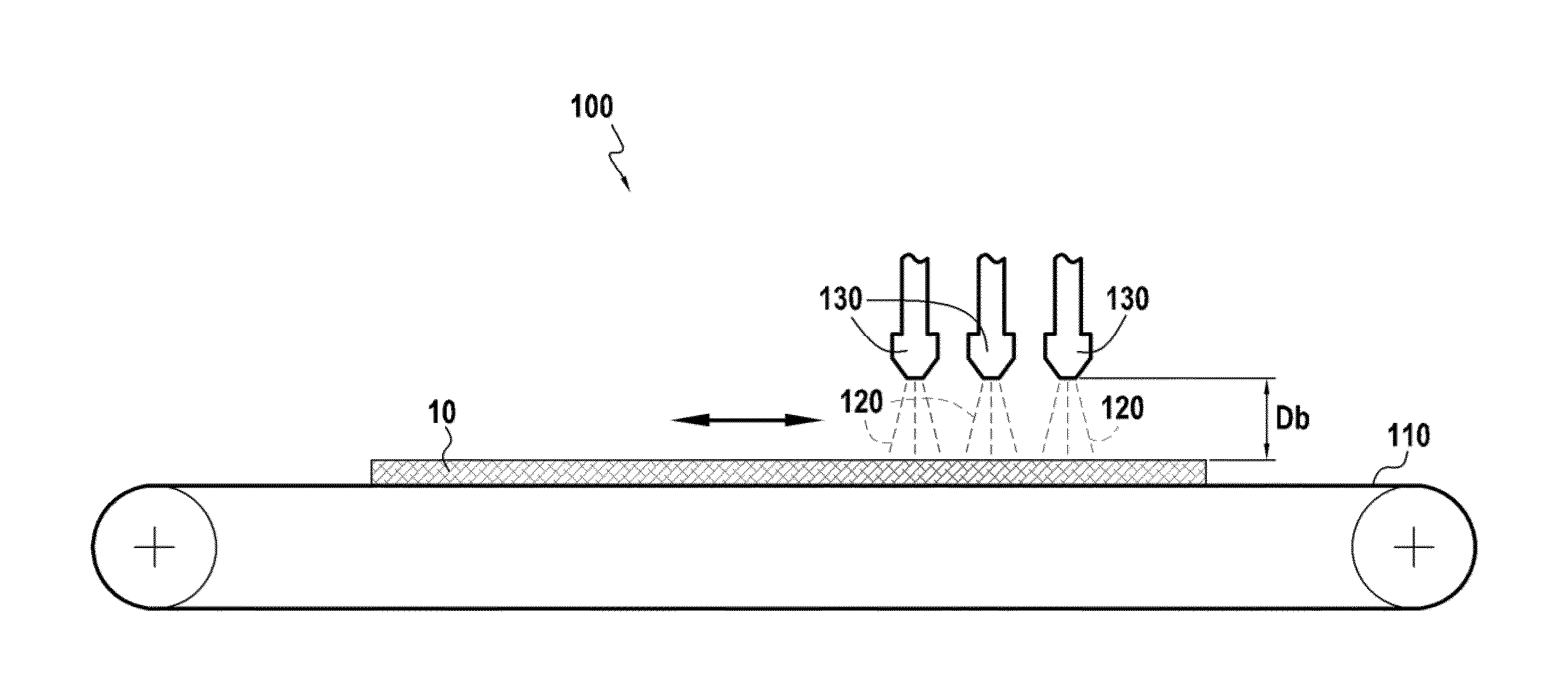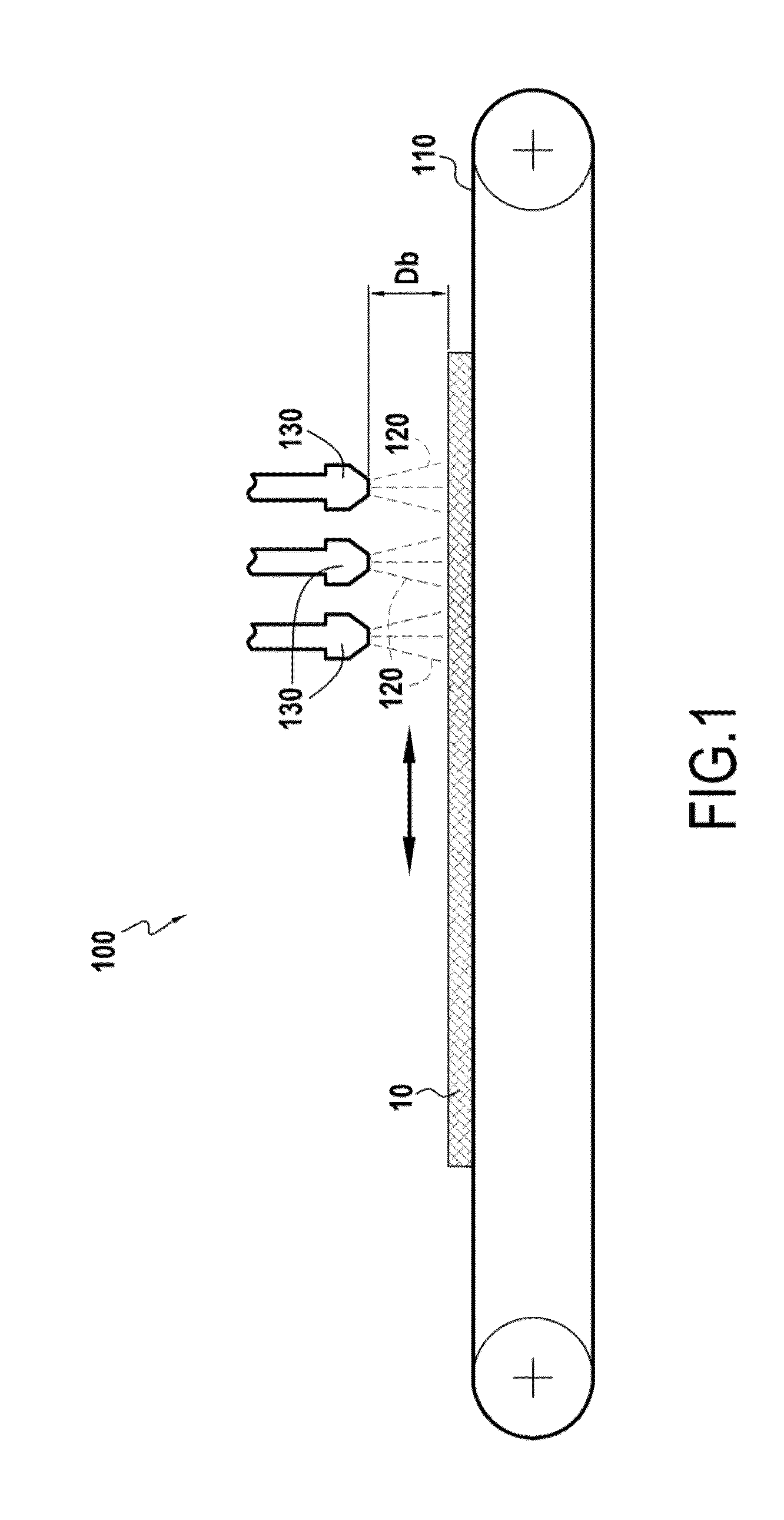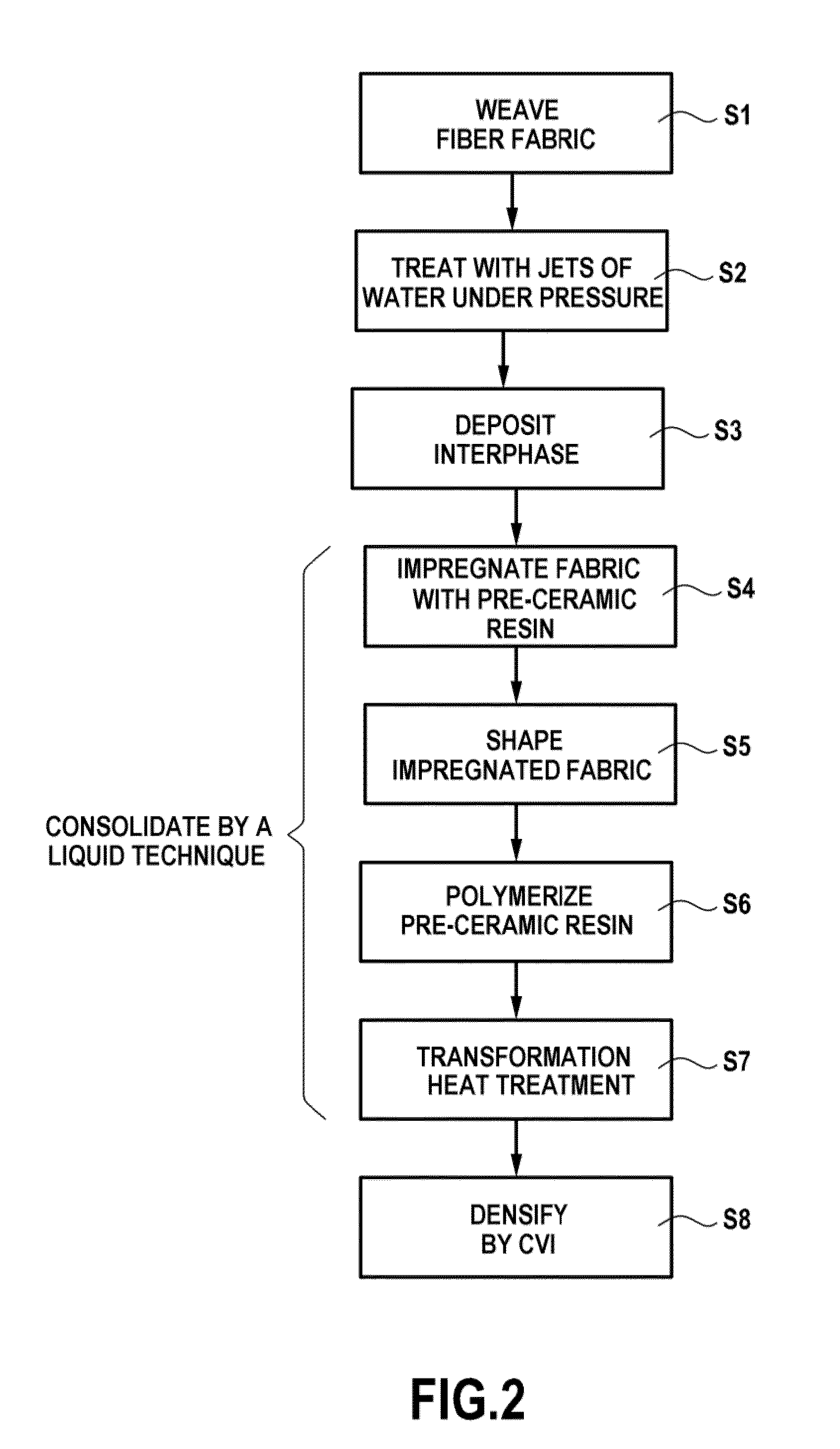Method of fabricating a composite material part with improved intra-yarn densification
a composite material and densification technology, applied in weaving, looms, chemical vapor deposition coating, etc., can solve the problems of reduced mechanical properties and fatigue strength of materials under stress at high temperature, difficulty in achieving densification to the core of continuous yarns, and reduced densification rate of continuous yarns. , to achieve the effect of increasing the number and volume of pores, reducing the mean fiber percentage, and increasing the distance between the fibers of yarns
- Summary
- Abstract
- Description
- Claims
- Application Information
AI Technical Summary
Benefits of technology
Problems solved by technology
Method used
Image
Examples
Embodiment Construction
[0027]The present invention proposes a method of fabricating a part out of thermostructural composite material by using a fiber fabric obtained by weaving continuous yarns. In order to improve intra-yarn densification, and consequently improve the mechanical properties of the part, the fabric is subjected to one or more jets of water under pressure prior to densification, thereby expanding the yarns in the woven fabric and increasing the mean distance between the fibers of the yarns. That treatment thus amounts to increasing the thickness of the fabric, thereby reducing the mean fiber percentage in the fabric.
[0028]In accordance with the invention, pressurized water jet treatment is performed firstly so as to reduce the mean fiber percentage in the fabric relative to the initial mean percentage, and secondly so as to obtain a final mean fiber percentage in the fabric having a value lying in the range 20% to 45%. For fabrics presenting an initial mean fiber percentage greater than 30...
PUM
| Property | Measurement | Unit |
|---|---|---|
| pressure | aaaaa | aaaaa |
| distance | aaaaa | aaaaa |
| pressure | aaaaa | aaaaa |
Abstract
Description
Claims
Application Information
 Login to View More
Login to View More - R&D
- Intellectual Property
- Life Sciences
- Materials
- Tech Scout
- Unparalleled Data Quality
- Higher Quality Content
- 60% Fewer Hallucinations
Browse by: Latest US Patents, China's latest patents, Technical Efficacy Thesaurus, Application Domain, Technology Topic, Popular Technical Reports.
© 2025 PatSnap. All rights reserved.Legal|Privacy policy|Modern Slavery Act Transparency Statement|Sitemap|About US| Contact US: help@patsnap.com



